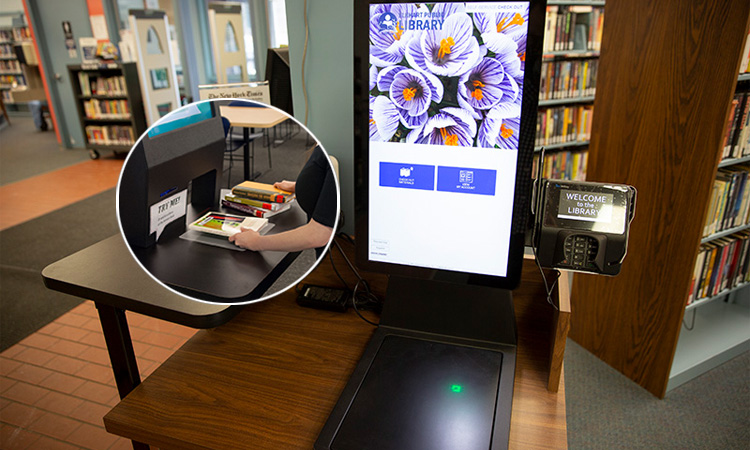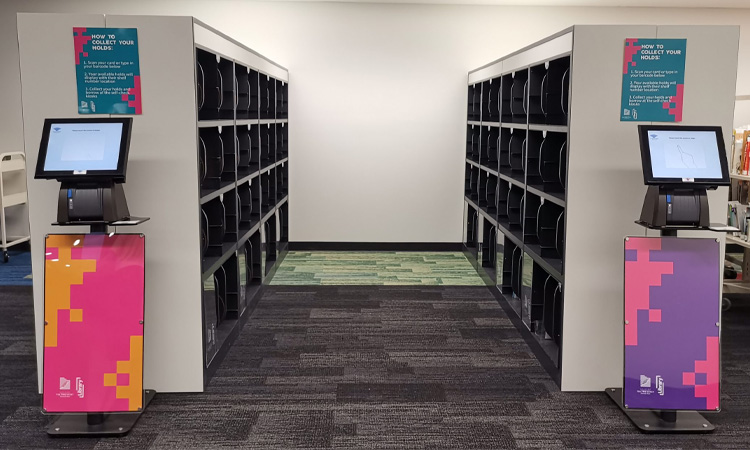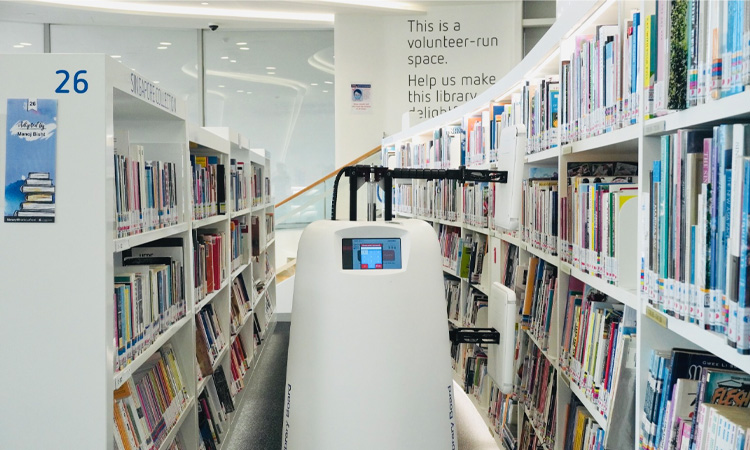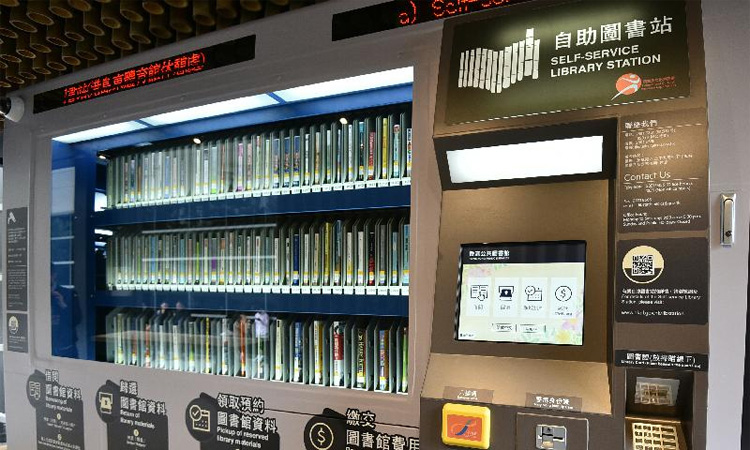Are you familiar with RFID? If so, you will likely use it during your day-to-day shopping trips. Many don’t realize that using this handy technology allows libraries to do much more than deliver books faster and make returns more efficient. In short, you can implement RFID in libraries for better outcomes for all patrons — both today and tomorrow.
Why Choose to Use RFID in Libraries?
Most libraries face the challenge of keeping up with staffing budgets over time. Rapidly growing communities and increased patronage coupled with the ensuing increase in circulation. It is difficult for libraries to increase their offerings. And improve customer service without increasing staff. But increased staffing means increased labor costs. Libraries are inherently unprofitable and can easily go out of business this way.
As a result, many libraries are turning to RFID technology. Because they can help libraries improve their functionality. Since the late 1990s, many industries in the United States have discovered the benefits of RFID. They have begun to integrate RFID into their business structures. These include the automotive, packaging, handling, and retail industries. In 2000, libraries around the world started thinking about the shift. They all announced their intention to integrate RFID technology into their library systems. To this day, You can find RFID in libraries around the world.
The RFID in libraries has many benefits. It helps libraries to improve the speed and accuracy of their circulation and shelving functions. This way, library staff can have more time to provide direct services to patrons. It also helps to enhance the customer experience. It also protects the library’s collection and allows the community to get more value from the library. Although RFID systems need a more expensive investment, it is worth it. In the long run, the investment will not only pay for itself. You can also continue to take advantage of its benefits into the decade or more.
You can set up RFID library systems using a subset of the RFID spectrum:
- High Frequency (HF)
- Near Field Communication (NFC)
- Ultra High Frequency (UHF)
The HF is suitable use for library books, ticketing, and payment. It can read tags up to 3 feet away. It also allows you to read many tags at once. In addition, the HF RFID system does not cause adverse reactions when tracking objects related to metal and water.
NFC is your best choice for proximity reading. Because it can usually receive and send information at only a few centimeters. The smartphones we carry daily can also be used as readers in an NFC system. If you need a small system or RFID for beginners, I highly recommend you use an NFC system.
UHF can read tags within a range of 10-30 feet. Most people call it RAIN RFID, today’s most common and used system. UHF RFID systems are widely used in retail, healthcare, transportation, and manufacturing. However, the short wavelength of UHF makes it a huge challenge. Tags operating at this frequency cannot resist interference from metal and water.
Often, new technologies are easily daunting. But RFID is different and can add tremendous value to your library. These smart-systems created using RFID make it easier for you to locate and track assets.
How can I Benefit from RFID in Libraries?
You can check out faster and easier with RFID in libraries. Library staff or patrons can read or check out many copies of data with RFID tags. This means you can return or check out books without waiting in long lines. Checking in with these RFID systems is also fairly simple. They are easy to use for both young children and the elderly.
Enhance the reader experience. No matter in any industry, friendly human interaction always has a positive impact. Library staff spends less time on their daily tedious tasks. Then, they spend more time focusing on human relationships and the customer experience.
An efficient library journey. Most libraries are faced with the need to keep track of many resources. They generally have thousands of individual items. Each item is essentially unique. These items are critical to some people who want to find them. Especially for those who want to use them as reference reports and those who like the author. With RFID, you can get the exact location of these items. Patrons and library staff are also able to locate their desired items easily. Traditional library management methods are very simple. But patrons and library staff often spend a lot of time trying to find specific items. This can easily lead to problems such as lost items and misplaced inventory.
RFID benefits staff. Job satisfaction is also greatly enhanced due to the use of RFID in libraries. The reduction in complexity means that repetitive stress injuries are also reduced. Employees are happy working in the library and will work harder.
With RFID in libraries, there will be a significant increase in staff productivity as well as patron satisfaction. Libraries can spend more time focusing on well-crafted projects and building friendly relationships. It also ensures that employees focus their time where it will impact the community most.
Examples of Using RFID in Libraries
Handley Area – RFID in Libraries System
The Handley Regional Library in Virginia is fully RFID-enabled. We can see RFID-enabled self-checkout devices in the library. Patrons can check out or return books quickly with this device. Patrons simply place their books in an RFID-enabled tray. The device then scans them and checks them out simultaneously in the system. Scanning here means scanning many items at once. It does not need you to scan individual items one by one.

You can also use the library RFID to sort returned books. Returned books flow through a return chute to a dedicated location, where RFID identifies each book at this time. It will then place those books that pass identification on the conveyor belt. Finally, it slides into those storage bins with similar titles. The staff can quickly put the books back where they belong by category.
The Handley Regional Library uses a more typical approach to RFID use. Some libraries take a more innovative approach to RFID, and the following are some interesting examples.
Quebec – Public Library Uses RFID Smart Shelves
Quebec’s public libraries use RFID on the shelves where they place their books. They use these RFID-enabled shelves to build an automatic book return system. The use of this system has helped to increase the circulation of books in the library. Simply put, when you return a book, it is left vacant for some time. During this vacancy period, most patrons will be unable to find the book. By placing the returned books on RFID-enabled shelves, you will soon be able to see them in the system. You can follow the system prompts to find the cabinet with the book and check it out. It also alerts staff in time when the shelf is full. The staff will place these returned books back in their correct locations.

According to the display prompts, patrons can return books by placing them on the library’s RFID shelves. The smart shelves read the HF RFID tags attached to each book. They record the read information in the library’s computer system for everyone to read. Each shelf has an antenna, a reader, and a cable you can pull out. You can easily access the computer system by connecting this cable to the information bar and doing simple setups. Of course, you also need to prepare application software that can communicate with each other. This software must integrate PC, reader, and library management systems. These asset management tools can help you keep better track of your library assets.
Singapore – Library Inventory Management Robot
Several researchers in Singapore have worked together to develop an RFID robot called AuRoSS. AuRoSS is an autonomous robotic shelf scanning system. AuRoSS can be unsupervised, especially at night when the library is closed. The robot, in its activated state, has autonomous artificial intelligence. The robot navigates through the shelves and looks for missing and misplaced books. According to the results of trials in Singapore libraries, AuRoSS is very useful. The robot’s reading accuracy is 99%.

The perfect combination of laser mapping navigation and HF RFID tags. They help the robot “get to” the item more quickly. Typically, the robot device tracks and detects items on the shelf along the curved or straight edges. The antenna on the robot’s arm helps it “reach” the defective item. It also allows the robot to read the contents of each shelf up close and accurately.
Hong Kong – Self-Service Libraries
Self-service libraries are one of the most common forms of public libraries in Hong Kong. These 24-hour online libraries are like vending machines in retail stores. Users can help themselves to the books they have checked out and return them. They can also collect vouchers for reserved materials and pay library fees in the self-service libraries. These self-service libraries may look small, but they have nearly 300 slots. You can store your books in these slots and check in at the kiosk.

You can set up these libraries stations in any location that meets the conditions. These conditions are that the location has an electrical outlet and an Internet connection with a fixed IP address. Patrons can bring books with UHF RFID tags to any 24-hour library to return them. As soon as the patron checks out and returns the book at the kiosk, the book’s status is immediately uploaded to the Hong Kong public library database. Library managers can use the database to know where each book is located and when to replenish the kiosk.
RFID in these libraries gives us many benefits. RFID self-checkout stations use to improve not only checkout efficiency but also reduce staff stress. The use of RFID smart shelving can effectively enhance the circulation of library books. Implementing library inventory management robots can help staff take inventory quickly. The promotion of self-help libraries also makes it easier to return books. With such a powerful RFID library system, are you sure you don’t want to consider it?
About RFID for Libraries FAQs
-
What is RFID technology, and how is it used in libraries?
RFID technology uses radio waves to identify and track objects; in libraries, it is used to track library materials. The technology enables library staff to locate materials quickly and improve circulation management.
-
What are the benefits of using RFID technology in libraries?
RFID technology provides several benefits for libraries, including enhanced security, faster checkout processes, and more efficient inventory management.
-
How does RFID technology improve library security and inventory management?
RFID technology improves library security and inventory management by enabling staff to identify and track materials more accurately and efficiently and to prevent theft.
-
What are the different components of an RFID system for libraries?
Components of an RFID system for libraries include RFID tags, readers, and software that captures and manages RFID data.
-
How does RFID technology impact library staff and workflow?
RFID technology impacts library staff and workflow by streamlining processes, reducing manual labor, and freeing up staff time for other tasks.
-
How can RFID technology be integrated with existing library systems?
RFID technology can be integrated with existing library systems by using RFID middleware to connect the RFID data to existing circulation, cataloging, and other systems.
-
What are the costs associated with implementing an RFID system in a library?
Implementing an RFID system in a library includes hardware, software, implementation, and maintenance costs.
-
How do RFID technology impact library patrons and their user experience?
RFID technology enhances the user experience for library patrons by providing faster and more efficient checkout processes, enabling self-checkout, and improving overall user satisfaction.
-
How can libraries measure the success of their RFID system implementation?
Libraries can measure the success of their RFID system implementation by tracking metrics such as circulation time, inventory accuracy, and patron feedback.








